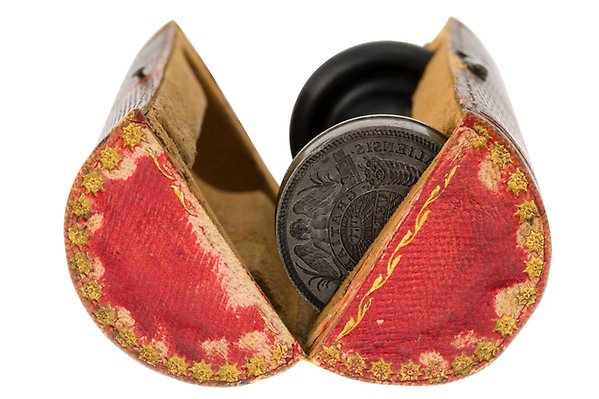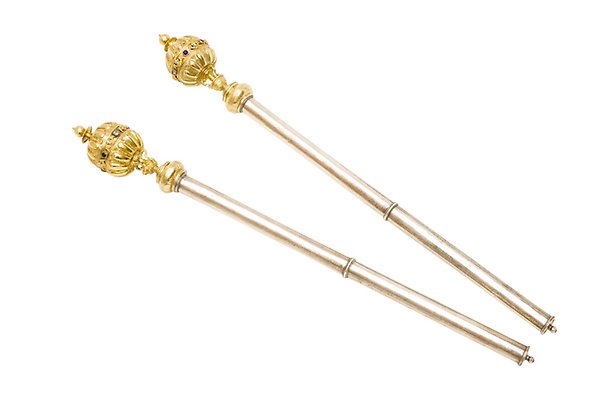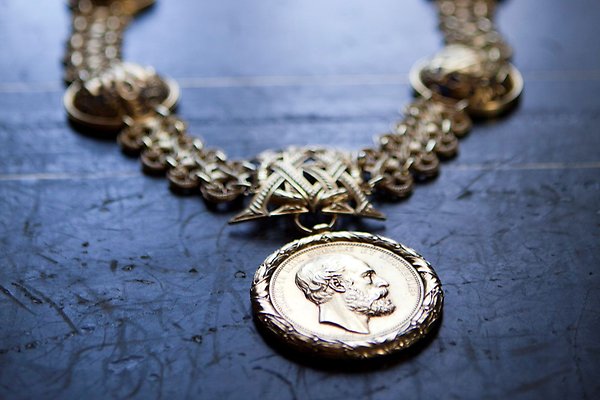Academic symbols
If you have participated in some of the celebrations at Uppsala University, you have probably noticed a few academic symbols.
The seal

The University’s seal was created as early as about 1600. Such a seal was necessary for confirming letters sent from the University. This seal image, Sweden’s oldest academic symbol, is now the University’s logotype and is in wide use as such.
The motto GRATIÆ VERITAS NATURÆ means ‘truth through the grace of God and through nature’. The rays of the sun symbolise God, and the globe nature.
Silver sceptres, wooden staff and the Vice-Chancellor’s chain of office

The early 17th century also saw the introduction of the two silver sceptres, which were devised to express the University’s independence. They are now kept at the Museum Gustavianum. The museum also exhibits the wooden staff that was crafted by the artist Jean Eric Rehn in the middle of the 18th century and that was originally an officer’s symbol, used by the commander of the University’s guard detail.
These three objects are often brought out for use in ceremonies. In processions the staff comes first, carried by the officer called the pedell, followed by the sceptres carried by the two cursors. Together these three, all attired in top hats and tailcoats, with yellow vests, precede the Vice-Chancellor in the procession. On such occasions the Vice-Chancellor wears the Vice-Chancellor’s chain of office, a gift to the University from King Oscar II on its 400th anniversary in 1877.

